
by California Casualty | Safety |
When disaster strikes, you may have only minutes to gather your loved ones, your pets, and your belongings, and get on the road. Are you ready?
Whether it’s a flood, fire, or other emergency, there are times when evacuations are necessary. These are often stressful times when you need to move quickly, and might not have time to grab everything you need. Preparing for emergency evacuations ahead of time will help you and your family know exactly what to do, and what to bring with you, in times of crisis.
Here’s what you need to consider when planning to evacuate.
Learn about local disasters and policies.
-
- Your place of work, your children’s school or daycare, and your local community probably have evacuation plans. You’ll want to find out about them, so that you can incorporate that information in your plan if it applies. Ask these places how they communicate about disaster procedures and what their policies are for emergencies and evacuations.
Pack it up.
-
- Pack an emergency kit full of essential items and documentation your family will need that’s ready to go and keep it in a place where you can grab it easily. Make sure it’s one you can carry or transport easily if you have to walk long distances or travel on public transportation in an emergency.
- Pro Tip: Revisit the content of your kit every six months. That’s when food may expire and children’s clothing sizes may change.
-
- You will need nonperishable food, bottled water, and supplies for 3 days. This includes soap, hand sanitizer, disinfecting wipes, and prescription medications. Make sure you include supplies for pets or infants, such as food and formula, and for any special dietary needs for members of your family. Also pack clothes and pajamas for every member of your family, as well as any bedding, pillows and sleeping bags. Finally, bring a first aid kit and all of your devices and chargers, as well as a battery-powered radio to stay on top of news and information.
-
- Keep a small amount of cash or traveler’s checks at home in a safe place where you can access them in case of evacuation. Store important papers in a fireproof, waterproof container that may be grabbed in case of an emergency. These may include birth certificates, marriage certificates, passports, insurance policies, wills and deeds, and even treasured photos.
Plan your escape route.
-
- Plan for the worst-case scenario. You want to make sure that every member of the family can exit your home safely in the event of an active disaster, such as a fire or earthquake.
-
- Draw a floorplan for your home. Use a blank sheet for each floor. Mark 2 escape routes from each room. Hang the drawing at eye level in each child’s room. Make sure children understand the drawings. Do a room tour and point out the exits. Practice using them. Talk about when your children might have to use them.
-
- Plan for which adults are bringing which items packed in the previous section. Dividing the responsibilities will help you get out more quickly.
Know where to go.
-
- Know your options about where you can evacuate. You may choose to evacuate to a shelter in your town, to a local hotel or motel, or to family or friends in another town, away from the danger. It also may depend on the type of disaster. You may not be able to stay local in a widespread flood but might be able to shelter in a hurricane. Download the FEMA App to locate emergency shelters in your area.
-
- If you choose the local shelter, find out the rules. You want to make sure that they can accommodate your family. You’ll also have to make separate arrangements for pets. (See the pet section below.)
-
- Choose destinations in different directions in case the emergency is in one part of town. Have the addresses and phone numbers handy for easy access.
Map it out.
-
- Keep a full tank of gas if evacuation seems necessary. Gas stations may have long lines or not be able to pump during a power outage.
-
- Be familiar with alternate routes in case you cannot take the route you know. Be alert for road hazards, washed-out bridges, and downed power lines. Avoid driving in flooded areas.
-
- Bring a physical map in case you don’t have access to a GPS or if satellites go down or your devices run out of power.
Plan for pets.
-
- You want to protect your pets during a disaster. That means you will need to find them a safe place to shelter, whether it’s with you at a pet-friendly location or at an animal boarding facility. Know that facility’s evacuation plan if they may be in the region.
-
- Pack pet food, leashes, litter boxes, crates, beds, toys, and any other supplies needed by your pet. Bring a copy of updated veterinary records.
-
- Make sure your pet is microchipped and has a proper ID on his or her collar if applicable. Bring a photo of you and your pet together, which can help if for any reason your pet gets separated from you.
Stay in touch.
-
- Establish a place to meet near your home in case you get separated. Choose a place immediately outside (such as the driveway), a little bit further (such as the stop sign at the end of the street), and a location even further (such as the neighborhood grocery store).
-
- Choose an out-of-state contact that you all can call if needed. Update that person when you are evacuating and as you change locations.
Ready, set, go.
Take the 10-minute evacuation challenge. See if you can get your family and belongings in a car in just 10 minutes. Then, practice your evacuation drill regularly.
Finally, check that you have enough insurance to cover your home, car, and possessions in case they are destroyed in a natural disaster or other emergency. You’ll all have peace of mind knowing that you are fully prepared and know exactly what to do.
This article is furnished by California Casualty, providing auto and home insurance to educators, law enforcement officers, firefighters, and nurses. Get a quote at 1.866.704.8614 or www.calcas.com.

by California Casualty | Auto Insurance Info, Homeowners Insurance Info |
Hail is responsible for billions of dollars of damage each year, according to the Insurance Information Institute. It only takes one bad hailstorm to damage your roof or siding, dent your vehicle or crack your windshield. Knowing what to expect, along with having the right auto and home insurance, will help you to protect your biggest investments.
What causes hail?
Hail commonly occurs during severe thunderstorms. It’s formed when storm winds carry rain up into the extremely cold parts of the atmosphere. The rain freezes, comes in contact with more rain that freezes to it, and ultimately becomes a chunk of ice. Eventually, the hailstones grow heavy and fall to the ground.
Hail can be as small as the size of a pea or as large as a softball. Most hail, however, is golf ball-sized or smaller. Windspeeds can cause hail to hit at a rate between 44-72 mph. Hail mixed with high winds has been known to cause severe damage.
What damage can hail do to your home?
ROOFS: Roof damage from hail is common. Large pieces of hail can make dents in shingles and destroy the roof’s finishes. Different types of shingles show damage in different ways. For asphalt and composition shingles, look for dings that are black in color or soft to the touch. They may resemble a bruise on an apple. Also, look for loss of granules on asphalt; the shingles may appear shiny. For wood shingles, look for splits that are brown or orange and have sharp edges. Damaged shingles can cause your roof to leak or create water damage to the structure below. Getting these fixed is important to keeping the integrity of your roof.
Pro-Tip: Are you renovating your home? Consider impact-resistant shingles that can withstand hail. Not only will they help to reduce damage, but they may also help you qualify for a discount on your property insurance.
SIDING: Hail can cause dents in aluminum siding and cracks in vinyl or wood siding. Water can seep in and cause problems. Look for warping or buckling, chipping, cracks, dents and holes. It’s best to do this when the sun isn’t too bright, as it could cast shadows and prevent you from seeing the damage. Again, get any damaged siding fixed as soon as you are able.
GLASS: During a hailstorm, stay away from skylights, windows, and glass doors, which are at risk for breakage from hail. Close your drapes, blinds, or shades in case a broken window occurs. This can help keep some of the glass from being blown around your house. Also, you may choose to install shutters which can help to protect your glass. You have a responsibility to make reasonable and necessary repairs to protect your property from further damage, as per your insurance contract. Your insurance company might reimburse you for these costs.
PATIO FURNITURE: Protect your patio furniture by covering it, or moving it inside a garage. Prune your trees ahead of time to remove weak or dead branches that can cause additional problems.
What damage can hail do to your car?
WINDSHIELD AND WINDOWS: Similar to the glass in your home, your car’s windshield, windows, and sunroof can be cracked or even shattered by hail. Cover your vehicle with a car cover. You can buy one or make your own with blankets. Secure the blankets with duct tape; while it may leave a sticky residue, it will not damage your paint.
CAR BODY: Hail can dent your car’s body as well the glass and a car cover can help. If a hailstorm is coming, park your car under an awning or in a garage. You can move your car to a local mall with a parking garage if you don’t have one. If you are driving during a hailstorm, pull over. Angle your car so that hail hits your reinforced windshield rather than the side and back windows.
What kind of insurance do you need?
You can’t control the weather, but you can purchase the insurance that keeps your home and your vehicle protected in case they are damaged by a hailstorm. These policies will give you the money you need to repair or replace covered items, subject to your policy deductible.
HOME PROTECTION
In most states, hail is one of the covered perils in a homeowner’s policy. Your dwelling coverage pays for repairs to your roof or siding while detached structures fall under “other structures coverage.” If hail gets inside and damages belongings, that can be covered under homeowner’s insurance. For personal property to be covered, the direct force of the wind or hail must damage the building, causing an opening in a roof or wall. You unfortunately won’t get any coverage if you leave the window or door open.
-
- If you live in a state that is prone to hailstorms, you may not be covered. You may have to purchase an endorsement to your policy or even a separate windstorm and hail policy to be covered for hailstorms.
- Your policy may have an exclusion for cosmetic damage to the roof and/or siding. If the damage done by hail is cosmetic, your policy will not pay. Cosmetic damage is considered damage that does not prevent the roof surface or siding coverings from functioning as a barrier to weather elements over an extended period of time.
- Depending upon the age of your roof (typically 10 years of age or more), actual cash value loss settlement could apply, meaning that you’ll receive an amount based on depreciation.
- If the damage isn’t higher than your deductible, you probably don’t need to file a claim. You can pay out of pocket, as insurance only kicks in after the deductible is met.
AUTO PROTECTION
Not all auto insurance policies cover hail damage. You have to have the right type of coverage.
-
- Other Than Collision Coverage or OTC is for natural disasters, fires, vandalism, theft, and animals that damage your vehicle. Think of it as “bad luck coverage.” This coverage is not usually required unless you’re leasing a vehicle or paying a car loan. However, it’s valuable to protect your car from hailstorm damage.
- If your car needs to stay in the shop, you will want an insurance policy with Transportation Expenses coverage, also known as rental reimbursement. If you carry coverage for damage to your auto, your California Casualty policy automatically includes coverage for a rental car up to $20 a day. For an additional fee, you can increase that amount.
- If hailstorms damage your car to the extent that it is totaled, your insurance policy will likely pay you for the actual cash value of your car.
Talk to your insurance agent to see what is covered under your policy before the next hailstorm strikes. That way you’ll be fully prepared.
This article is furnished by California Casualty, providing auto and home insurance to educators, law enforcement officers, firefighters, and nurses. Get a quote at 1.866.704.8614 or www.calcas.com.
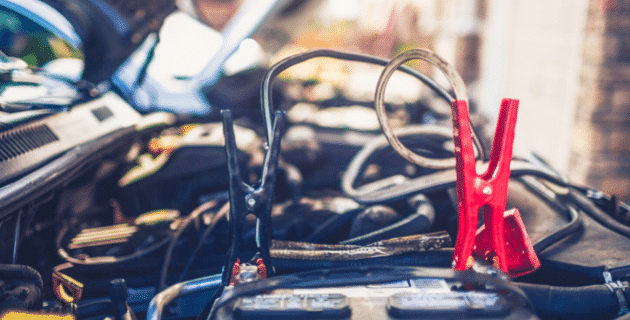
by California Casualty | Auto Insurance Info |
Car batteries don’t last forever. Luckily, if your car won’t start due to a dead battery, there’s an easy fix. You can jump start it.
Jump starting a car transfers the battery power from a live battery in one vehicle to the dead battery in another. It does this by creating a circuit, most commonly using jumper cables. Jump starting isn’t a permanent fix, but it will help you get to where you’re going. And then, you can schedule a follow-up with your mechanic to check your battery and replace it as needed.
It’s not difficult to jump start a car, but you do need to know how to do it properly. If you do not connect the cables in the right way and in the exact order, you could be in for trouble. Follow this process to successfully jump start your car — or someone else’s — this season.
1. Park so that your car’s engine is next to the other car’s engine without touching. In most cases, your cars will have to be facing each other in order for the jumper cables to reach.
2. Place both vehicles in park or neutral. Shut off the ignition. Put on the parking brake.
3. Pop the hoods. Locate the batteries.
4. Get out the jumper cables. Note that they have red and black clamps.
5. Attach one of the red clamps to the positive terminal on the dead battery. Look for the big plus sign or the letters POS to make sure it is positive. Sometimes the positive terminal is also the larger one. (Always connect the dead battery first. Otherwise, you could be feeding energy in the cables and cause a safety hazard.)
6. Attach the other red clamp to the positive terminal on the battery of the working battery.
7. Clamp the black negative to the negative terminal of the working battery.
8. Attach the last black clip to an unpainted metal surface on the car with the dead battery. You can find such a surface on one of the metal struts that holds the hood open.
9. Start the working vehicle and let the engine run for a few minutes.
10. Try to start your vehicle. If it doesn’t start right away, give it another minute and then try again.
11. Remove the cables in the reverse order that you connected them.
12. If the jump start works, don’t shut off your vehicle. Drive around for at least 15 minutes to recharge your battery. And always remember to thank the person who helped you!
If you want to jumpstart your car on your own, you can buy a battery jumper pack. Most people consider this one of the must-carry safety items for your car in the winter. A battery jumper pack is a portable battery with cables that can jump-start your car without the need of another vehicle. If you choose to go this route, be sure to carefully follow the directions. The procedure varies from device to device.
If you feel unsure or unsafe at any point, call for 24/7 roadside assistance. You can also call if the jump start does not work and you need a tow.
Do’s and Don’ts of Jump Starting
Now that you have the basics down, it’s good to review some safety do’s and don’ts.
Do…
-
- Read your owner’s manual on jump starting. In some cases, jump starting may void the warranty. In other cases, there may be jump start lugs where cables need to be attached. The manual will detail any special instructions.
-
- Make sure the battery on the good Samaritan’s vehicle has at least as much voltage as your own. Otherwise, serious damage could occur.
-
- Check that the clamps on the jumper cables are rust-free.
-
- Check that the battery does not have corrosion or rust. You can clean corrosion and dirt with a wire brush. (Corrosion will sometimes prevent the battery from charging.)
-
- Unplug accessories like cell phone chargers. The power surge from the jump start could cause them to short out.
-
- Turn off headlights, hazard lights, turn signals, and the radio in both vehicles.
-
- Use rubber gloves and safety goggles if you have them for extra safety.
Don’t…
-
- Lean over the battery of either car.
-
- Smoke while jump starting a car.
-
- Jump start a battery if it is cracked, leaking or the fluids are frozen. This can lead to an explosion.
-
- Ignore the warning signs:
-
-
- Slow starting engine
- Dim lights and electric issues
- Check engine light is on
- Corroded connectors
- Rotten egg smell
And don’t forget! AutoZone offers free battery testing so you can feel confident that your battery is fully charged.
Finally, remember to turn your lights off. We all know how that typically ends.
Safe travels.
This article is furnished by California Casualty, providing auto and home insurance to educators, law enforcement officers, firefighters, and nurses. Get a quote at 1.866.704.8614 or www.calcas.com.
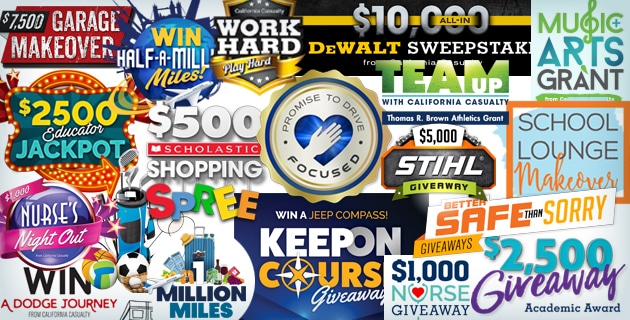
by California Casualty | In Your Community |
What began as a School Lounge Makeover has transitioned into a multitude of community giveback programs that have made a difference to you (and us!) over the last ten-plus years. We call them California Casualty Community Impact Programs or CCCI for short. They are the “brand energizers” or giveaways, grants, and sponsorships created to support your community endeavors.
The following is a brief list of different programs that we have offered throughout recent years. Please tell us what programs you would like to see again, and/or any new ideas that you would like to see introduced by commenting below.
SCHOOL LOUNGE MAKEOVER – CLOSED
Educators work hard and deserve a pleasing, well-functioning place to rejuvenate, plan, meet or have a meal. The School Lounge Makeover was piloted at Colfax Elementary School in Denver in 2010, and formally launched nationwide in 2011. The yearlong contest awarded four winning schools $7500 (one randomly drawn winner per quarter) to transform their school lounges with assistance from local designers, painters and others.
THOMAS R. BROWN ATHLETICS GRANT PROGRAM – CURRENT
The California Casualty Thomas R. Brown Athletics Grant Program was created to financially aid public middle and high school athletic programs impacted by reduced budgets. The program provides a grant of $1,000 for each public middle and high school awardee. Applications are received year-round. Applicants must be an active member of NEA or one of our participating administrator groups in the 44 states that California Casualty serves.
CALIFORNIA CASUALTY AWARD FOR TEACHING EXCELLENCE – CURRENT
The California Casualty Awards for Teaching Excellence recognize educators whose professional practice and advocacy for the profession are exemplary. The NEA Foundation and the National Education Association jointly present the awards with support from California Casualty, NEA Member Benefits, and Pearson Foundation. In addition to being honored at the Washington, D.C. gala, educators’ schools receive an award/gift from California Casualty. Nominations are made through state associations in the spring; the gala is held the following winter.
CALIFORNIA SCHOOL RECOGNITION PROGRAM – CURRENT
As Presenting Sponsor of the California School Recognition Program, California Casualty joins the California Department of Education (CDE) in celebrating the California educators that are exceeding expectations as they create safe, inclusive environments for learning. The California School Recognition Program recognizes these exceptional teachers, administrators, and classified employees through The California Teachers of the Year Gala,
The Classified Employees occasion, regional Gold Ribbon Recognition events across the state, and on-site Gold Ribbon Schools award presentations fulfilled by California Casualty Field Reps.
HELP YOUR CLASSROOM – CLOSED
Help Your Classroom was an opportunity for NEA members who request a quote from California Casualty to be entered into a random, monthly drawing for $200. Knowing staff frequently spend out of pocket to provide the necessary tools for learning for their students, the funds were provided via email as a credit for an online vendor so the recipient could purchase classroom supplies and equipment to be delivered to their school.
WORK HARD/PLAY HARD – CURRENT
A variety of public safety prizes have been given away under the theme of an annual “Work Hard, Play Hard” contest. We understand the demands of the job and the appreciation for opportunities to play just as hard. For this contest, firefighters, law enforcement, and EMTs are invited to simply enter to win – no strings attached. The odds of winning are based on the number of entries received. Prizes typically range in value from $7,500 to $10,000 – sometimes even more. To date, contest prizes include a SeaDoo personal watercraft; Harley Davidson 48; Polaris ATV (spring 2012); Bass Boat; DeWalt Tools, 5.11 Gear, and Liberty Safe; Garage Makeover, etc.
FIRE STATION MAKEOVER – CLOSED
Firefighter shifts are long and, when not out on call, firefighters work and live in the same physical space. A tight economy has delayed or canceled station upgrades. Similar to the School Lounge Makeover, this giveaway gave the winning entry a $15,000 makeover for one fire station room with assistance from local designers, painters, and others. The winning package included new kitchen and laundry appliances from Maytag, a fresh coat of paint inside and out from Sherwin-Williams, and a big-screen, closed-circuit TV system from FireRescueTV.
NURSE NIGHT OUT – CURRENT
In 2012, California Casualty originally coined the giveaway as a Nurses Night Out promotion to provide nurses the opportunity to blow off some steam – renting a limousine and hitting the town, hosting a party, or treating their co-workers to a fabulous meal at their favorite restaurant – in relief of the endless hours spent meeting the needs of patients and their families. The 2020 Nurses Night Out campaign honored these same frontline healthcare professionals as they battled COVID-19 – through incredibly long hours, heartbreaking care cases, and increased personal risk. It was then decided to change the tone and the look of the promotion to a message more appropriate for the times. The new look focuses more on the appreciation California Casualty and communities across the country – and around the world – have for the compassion, dedication, and personal sacrifice these Healthcare Heroes exemplify.
ACADEMIC AWARD – CLOSED
Over 90% of educators reach into their own pockets to provide instructional supplies, food, and personal care items for their students. California Casualty pitched in with the Academic Award program to help with the expense of classroom and student needs. The contest awarded multiple K-12 public school educators with a $2,500 Academic Award. The check was made payable to the school with an understanding that the funds will be designated for use by the winning administrator, classified employee, or teacher of that school.
NOMINATE A HERO – CLOSED
To honor the everyday heroes we serve, California Casualty invited people to share the stories of heroes they knew. The “Nominate a Hero” program asked community members to share how a particular nurse, firefighter, educator, or peace officer made a difference in their lives and communities. Candidates for the Nominate a Hero program are nominated online by their family members, friends, and coworkers—and sometimes by strangers touched by their actions. A monthly winner received a $250 gift card and their place in our Hall of Heroes. An annual winner was then selected from the 12 monthly winners and received a $10,000 cash prize.
MUSIC & ARTS GRANTS – CURRENT
Created to assist schools in bringing artistic programs into the classroom, the Music and Arts Grants program considers grant requests for public K-12 schools whose music and arts programs are in jeopardy or in great need of funding. Requests will also be considered for individual classrooms wishing to integrate music and/or arts projects within school curriculum.
IMPACT TEEN DRIVERS (ITD) WORKSHOPS – CURRENT
Teen reckless and distracted driving is an epidemic, yet 100% preventable. Impact Teen Drivers works with you and other influencers to deliver a simple, yet life-saving message to young drivers and their passengers: Focus on the road ahead and get to where you are going safely. Developed as a multi-faceted approach, this powerful program gives advocates the flexibility to get involved on their own terms— from direct outreach and education through association or school presentations to Train-the-Trainers and Parent-Teen Safe Driving Workshops.
ITD CREATE REAL IMPACT CONTEST – CURRENT
Students across the nation, aged 14-22, can win cash prizes for their best creative message against dangerous distracted driving. Utilizing peer-to-peer messages, Impact Teen Drivers and California Casualty encourage students to help spread the word that distracted driving, the number one killer of young drivers, can be reduced and prevented. The seasonal Create Real Impact contest (Spring and Fall) was initiated in 2009 to find proactive solutions to the deadly epidemic of inattentive teen driving.
PROMISE TO DRIVE FOCUSED – FORD FOCUS GIVEAWAY – CLOSED
Surrounded every day by children, educators know all too well how devastating the preventable death of a young person can be. As natural role models, educators’ actions are noticed by students and colleagues. That’s why California Casualty asked educators to “make the promise to drive focused,” complimenting the efforts of Impact Teen Drivers, a non-profit founded and supported by California Casualty to prevent distracted driving. Those who made a promise to drive focused were entered to win a new vehicle valued at $20,000.
KEEP ON COURSE – JEEP COMPASS GIVEAWAY – CLOSED
Following the success and engagement of the Promise to Drive Focused campaign, California Casualty once again asked educators to “Keep on Course,” and get home safely by avoiding distracted driving. Educators who made a promise to drive safely were entered to win a new Jeep Compass from California Casualty. The year-long Keep on Course campaign was dedicated to preventing needless tragedies from inattentive/distracted (multi-tasking behind the wheel) driving.
WHEREVER YOUR JOURNEY TAKES YOU…WE’LL BE THERE DODGE JOURNEY GIVEAWAY – CLOSED
Reminding educators of the importance of having the right insurance coverage for their stage in life, the “Wherever Your Journey Takes You, We’ll be There” sweepstakes showcased a comprehensive website of auto and home insurance information for the various stages of life, and offered educators the chance to win a new Dodge® Journey SUV.
WA GREEN RIBBON SCHOOLS – CURRENT
As the Green Ribbon Schools Local Sponsor, California Casualty provides funds to each Washington Green Ribbon School awardee to help with expenses traveling to the national honors ceremony in July, held in Washington, D.C., or apply the funds toward further improving their green programs.
Looking ahead – California Casualty will continue to introduce grants, programs, and giveaways each year. While many are coming to an end this time of year, replacements are introduced in Q1 each year. Future Connection newsletters will share details as they are available.
This article is furnished by California Casualty, providing auto and home insurance to educators, law enforcement officers, firefighters, and nurses. Get a quote at 1.866.704.8614 or www.calcas.com.
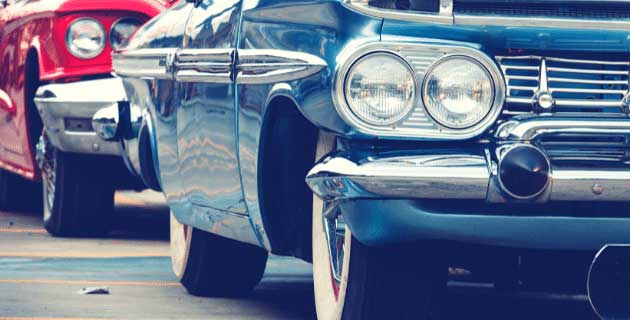
by California Casualty | Auto Insurance Info |
We’ve all got that one person in our lives who absolutely lives for cars. Their knowledge can rival any Google search. And don’t even get them started about a certain body style or engine, or they’ll never stop. To them their car isn’t just a car; it’s their baby.
If you’ve got one of these folks on your gift list, you’re in luck! Whether it’s the latest tech toy or the unusual find, we’ve got the best gifts for all car enthusiasts below.
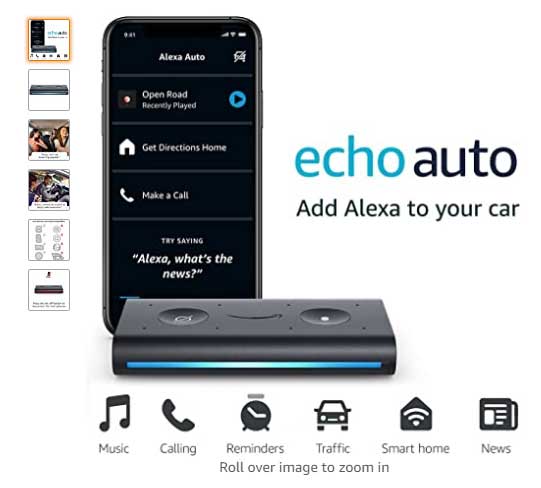
Hi-tech Gear
The car may be the centerpiece but these hi-tech additions can make a sweet ride even sweeter!
- Amazon Echo Auto puts Alexa right in your car. The device connects to the Alexa app on your phone and plays through your car’s speakers. Alexa can play music, make calls, find a nearby coffee shop, pay for gas, all at the command of your voice. It doesn’t work with all car models or smartphones, so check before you buy.
- NOCO’s Portable Battery Jump Starter Pack offers peace of mind if you ever need an extra charge. It’s also an LED flashlight and a portable power bank for USB devices. This booster is rated for gasoline engines up to 6 liters and diesel up to 3 liters.
- The Garmin Dash Cam Mini 2 alerts you if there’s an incident around your car and automatically records it. It provides video if you’re ever in an accident. This device is prohibited in some areas; make sure you’re aware of the local laws.
- The Car Cushion with Massage and Heat from Sharper Image offers comfort and warmth for those long, cold winter drives—and even the short ones!

Car Inspired Fashion
These trendsetters are a must for car lovers when they aren’t behind the wheel.
- Puma has a line of motorsport sneakers that celebrate such carmakers as Porsche, BMW, and Ferrari. With logos and team colors, these kicks are perfect for life in the fast lane. Pair them with Heel Tread socks, inspired by classic car brands.
- Driving gloves are not only a stylish accessory. They give you a firmer grip on the wheel and they keep the wheel from getting dirty or sticky.
- From t-shirts with classic Corvettes to funny ones that proclaim “still plays with cars,” Zazzle has some great options.
- Speedometer and fuel gauge cufflinks are the perfect accessories for any dress-up occasion.
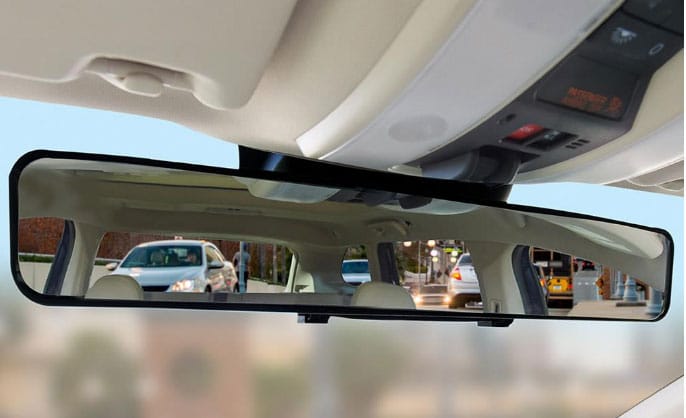
Practical – and Fun
Check out these fun and useful ideas for the car lover in your life.
- Etsy has some wonderful presents for car lovers. If you’re looking to open a little bubbly this holiday season, the spark plug bottle opener is the perfect gift. Or try these car coaster cup holders that keep those pesky places clean from dirt and debris. For the car-loving dad in your life, this key chain says it all.
- The No Blindspot Rearview Mirror was rated the best by the Hammacher Schlemmer Institute. It offers a 180-degree view with no distortion, and clips right over most existing rearview mirrors.
- The Gillette Heated Razor Bugatti Limited Edition pays homage to the iconic Bugatti. Plus, this razor heats up, delivering a shave that’s as luxurious as the car!
- Teachers, give a special gift by extending your NEA Member Benefits to eligible family members. NEA Member Benefits recently added siblings to the list of family members eligible to access the NEA Auto and Home Insurance Program provided by California Casualty. Parents, in-laws, adult children, and now siblings can take advantage of the special rates, deep discounts, and personalized service available through the NEA Auto and Home Insurance Program.

Just for Fun!
Put a smile on every car lover’s face this season with these uniquely fun gifts.
- LEGO® isn’t just for kids. The toymaker has an extensive line of car kits for adults. This includes the LEGO® Technic Lamborghini Sian FKP 37 and the James Bond™ Aston Martin DB5. Let the car lovers in your life build their dream car collection.
- For the gamer in your family, the Logitech G920 Racing Wheel offers a great “driving” experience. It realistically simulates the feel of your car and tires on every turn.
- When you can’t get enough of your car, a custom watercolor print is just the thing! You can also find beautiful car wall art on Fine Art America.
- For the ultimate gift, give your car lover a ride in a race car. Virgin Experience, Xtreme Experience , and others offer chances to drive tracks throughout the U.S. Also check Groupon for local listings of exotic car rides or rentals in your area.
Happy holidays from California Casualty!
This article is furnished by California Casualty, providing auto and home insurance to educators, law enforcement officers, firefighters, and nurses. Get a quote at 1.866.704.8614 or www.calcas.com.









